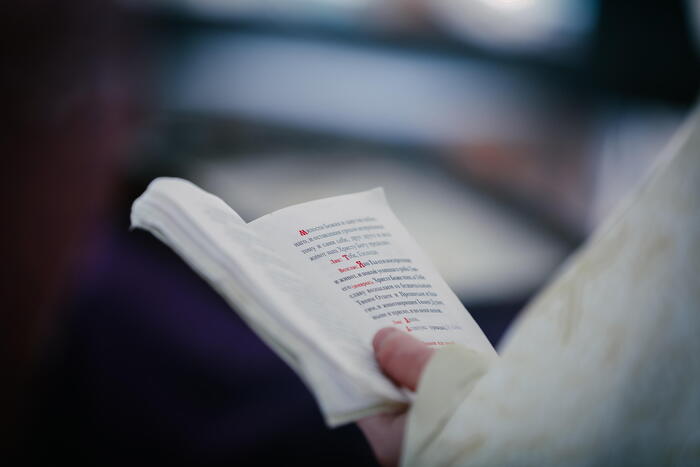When the covid pandemic began, the Argentine illustrator Jorge Alderete was in Mexico City – he has lived in the capital since 1998 – and planned to watch television during the two weeks that the health emergency was supposed to last.
It was not like that, the pandemic lasted longer, and at some point he began to draw.
At first they were seemingly unconnected images, ink drawings of naked women, aliens, fantastic animals, dildos, latex masks, the head of Benito Juárez.
It was nothing, but it started to be a picture book that hadn't been written yet.
He thought: “Who would I have no problem showing all this to and see if he wants to join in?”
"And yes, it was Mariana," he says by videoconference from his studio.
“We had met again relatively recently, just before the pandemic.
-It was at your house.
By [the writer] Bernardo Esquinca.
Mariana Enriquez was in another part of the continent, in Buenos Aires, Argentina, when Alderete wrote to her.
The country had already been locked down and people could hardly go outside due to restrictions imposed to contain the spread of the virus.
"What was happening with the pandemic was too much... a little overwhelming," recalls the writer, also by videoconference from the Argentine capital.
Alderete had sent her the images of her and proposed a kind of game: she could invent whatever she wanted from those drawings, from an epigraph to a short novel.
“She was with very little desire to write and with very few ideas.
And to me in general, among other things because I am a journalist, I like to write from an external stimulus, ”explains Enriquez, which she accepted.
So she began to take shape
The Year of the Rat
, the chronicle of a dystopian future.
“It came about very naturally.
On the one hand, I think it has to do with our common history”, says the writer.
The cover of the book "The Year of the Rat", a co-authorship of Dr. Alderete and Mariana Enriquez.Dr.
Alderete
"Thistle" Dr.
Alderete
"Chinese Beach" Dr.
Alderete
"Nazi UFO" Dr.
Alderete
"Head of Juarez" Dr.
Alderete
"Chinese Rocks" Dr.
Alderete
"Police on my back"Dr.
Alderete
Alderete and Enriquez met more than three decades ago, when they were students, in La Plata, a city 50 kilometers from Buenos Aires that is the capital of the province and also has some large towns.
In that capital-town there is, for the writer, a somewhat “insular” condition: “It is a kind of world of its own from which very powerful things come out.
It is a bit because of that precarious isolation that has to do with where are you going to go?
In the late 1980s and early 1990s, when they met, it was also a "quite uncontrolled" city.
“It was a very intense time to be young,” recalls Enriquez.
Although they went to different faculties – he to Fine Arts and she to Journalism – and they are two years apart – he is 50 and she is 48 – they shared the group of friends.
They saw each other on the street or crossed paths in bars,
During those years, Enriquez published his first novel,
Going Down is the Worst,
which has just been republished by Anagrama.
Alderete remembers that the work immediately became “the book that had to be read”.
The novel, which tells a story of gay love and drugs at night in Buenos Aires, came into the hands of the writer Juan Forn, who worked at the Planeta publishing house and immediately asked for a contract for that "smoky and indifferent minipunk."
Later, Enriquez would go to work as a journalist in the newspaper
Página/12
, where she is now the deputy editor of the cultural supplement, she would publish
The things we lost in the fire
, the collection of stories that launched her international career, and she would publish
Our part of the night
, the novel with which he won the Herralde Prize.
But in 1995, that first publication was already a youth cult book.
–I imagine that when the book was written you had already gone to Buenos Aires.
I am not very clear about those years, you saw that everything begins to be a nebula.
-No, me neither.
I remember, yes, I didn't read it.
It's hard for me when everyone says “this has to be done”.
It keeps happening to me, huh.
–I have a theory that those who know you read you much less than those who don't know you.
At that time, Alderete was also beginning his career as a graphic artist.
After the university stage would come the international exhibitions, the anthologies edited by Taschen, the album covers for Los Fabulosos Cadillacs or Café Tacvba, the art gallery in Mexico City, his own record company.
All under the pseudonym of Dr. Alderete.
"His illustrations changed a lot, they were perfected, but there is something that is very similar: it was very impressive visually, the theme of the fetish was always there and he introduced elements that were very different," says Enriquez.
–You were in… What was the name of the magazine?
Chinese
ink
?
–The one we did with Maxi [Luchini].
No,
Gratarola
.
It was the time of fanzines, comics...
In 1998, Alderete and many of the friends that the illustrator and the writer shared emigrated from Argentina, some going to Barcelona and others to Mexico City.
2001 had not yet arrived and the political, social and economic crisis that followed the
corralito
in the South American country.
Enriquez remembers the end of the decade like this: “Those who left left with a project, with a 'let's see if it works out', but I didn't even have that.
And instead here [in Argentina] I did have a 'let's see if it works out'.
I stayed, but it was a moment of total loss and also of frustration that passed over time”.
There were years in which they did not see each other.
The careers of the two continued to grow.
Sometimes they ran into each other at a book fair.
And before the covid-19 pandemic began, they met in Mexico City.
Dr. Alderete
Later, the confinement and the incipient beginning of
The year of the rat
.
The images that Alderete had been illustrating were too intimate because they had not passed through the filter of self-censorship;
because, total, they were not going to be published.
They were part of “a kind of therapy”: “I was locked up all day, if I started to think about anything I was going to get to a place where I didn't want to go.
Then I started to draw”.
It started in the morning and sometimes it was done at night.
There were days when only one image ended and others when there were two, or three.
“
The year of the rat
started first without being a project.
It started in a very casual and carefree way, I would almost say that without any clear direction”, says the graphic artist.
"I don't want to sound
hippie
."
Yes, because it is
totally anti-hippie
.
Enriquez received the illustrations and began to write short, almost journalistic, chronicles about a rarefied world where the sun turns black –although it illuminates and gives heat–.
There are aliens with female anatomy and empty bodies that urinate lemonade, dolls that transmit a sexual curse, driverless trucks that drip with fluids,
influencers
with weapons and monuments that light up with neon without anyone understanding why.
Some of the stories are invented and others are based on real cases.
"Since the tone is the same," says the novelist, "you don't realize it."
“There's kind of a vague sci-fi feel to it, but very elemental, very urban, very JG Ballard-esque.
And also a little
fifties
, more
naif
”, he explains, adding: “It allowed me to play with a lot of elements that are not, in general, what I work with”.
Between Enriquez and Alderete there were hardly any exchanges about the content of the texts or the images, except in some specific cases.
None, however, wanted the book to be a chronicle of the pandemic.
Although many masks appear in the drawings, for example, there are no face masks.
In the texts, the health emergency is only mentioned in passing.
The most direct allusion, and it is not explicit, is in the headline: the year of the rat in the Chinese calendar coincided with 2020. There are stories that appear in the illustrations that are not in the texts, and vice versa.
"Something that attracted me to the drawings was the high level of eccentricity," says the writer, "I found threads in some things, but not others, not at all, and I liked that, that it was capricious."
-It's capricious, I hadn't thought of the word.
Dr. Alderete
The process lasted several months because there was no commission, there was no editor, there was no rush.
"What there was was uncertainty," says Alderete.
"What is going to happen?
Are you going to continue publishing books?
Will there be paper?
The project, which was not a project until it was finished, "could not have worked and people would not even have known about it," adds Enriquez.
But it worked, the book took shape and was published in Mexico by Alboroto publishing house and in Argentina by Libros del Zorro Rojo.
It also grew off the page: dancer Dalel Bacre created contemporary dance choreography from some of the images;
the director Christian Weber recorded the performance and the musicalization was in charge of the Portuguese Paulo Furtado.
Both Enriquez and Alderete emphasize that the authorship of the book is shared –if the entire multidisciplinary project is taken into account, even more so–.
There was something about the process, says the writer, that was “half punk, half
under
”.
"Obviously we're not going to pretend we made a zine by cutting and pasting," she says, "but the spirit was a bit like that."
“It reminded me of the time I lived in groups of fans, sending things that all took a century to arrive.
In this case, it didn't take a whole century to arrive, but there was something to do with the distance and the impossibility of seeing each other.
It was a bit like being in the nineties without a handle.
Like a total delirium,” she says.
That time when they went "from reading William Burroughs to going to look for the mango," says the writer;
It was the years in La Plata again.
subscribe here
to the
newsletter
of EL PAÍS México and receive all the informative keys of the current affairs of this country



/cloudfront-eu-central-1.images.arcpublishing.com/prisa/24NHQIEXENB45FKJOEF5XQ3RZQ.jpg)
/cloudfront-eu-central-1.images.arcpublishing.com/prisa/ZVQ5LBKTXFHDJORVBNAZ443NPM.jpg)




